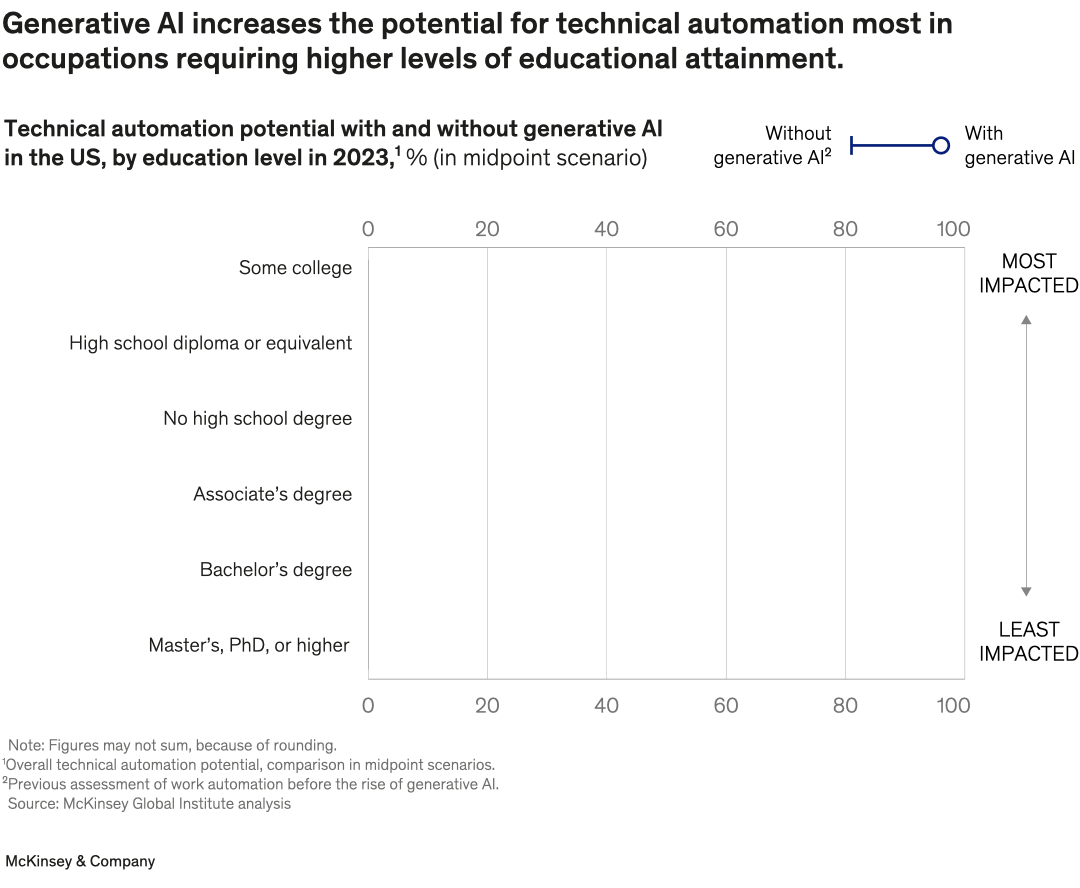Automation technologies tend to most directly affect workers with lower levels of educational attainment. Generative AI, however, is aimed a bit higher, senior partner Rodney Zemmel and colleagues explain. Activities performed by workers with higher education levels—such as bachelor’s degrees or PhDs—have greater potential to be carried out by generative AI than tasks performed by workers without a college degree.

Image description: A horizontal bar graph illustrates the potential impact of generative AI (gen AI) on technical automation across different educational attainments in the US. Without gen AI, the automation potential is as follows: 48% for people with some college education, 51% for high school graduates, 54% for those without a high school degree, 45% for associate’s degree holders, 36% for bachelor’s degree holders, and 28% for those with a masters, PhD, or higher education. With integration of gen AI, the automation potential increases to 65% for those with some college education, 64% for high school diploma, 63% for no high school degree, 62% for associate’s degree, and 60% for bachelor’s degree. Automation potential jumps to 57% for occupations of those with a masters, PhD, or higher education.
Note: Sums may not total, due to rounding.
Footnote 1: The figures represent the overall technical automation potential, comparing midpoint scenarios.
Footnote 2: The data contrasts with prior assessments of work automation conducted before the rise of generative AI.
Source: McKinsey Global Institute analysis.
End of image description.
To read the report, see “The economic potential of generative AI: The next productivity frontier,” June 14, 2023.